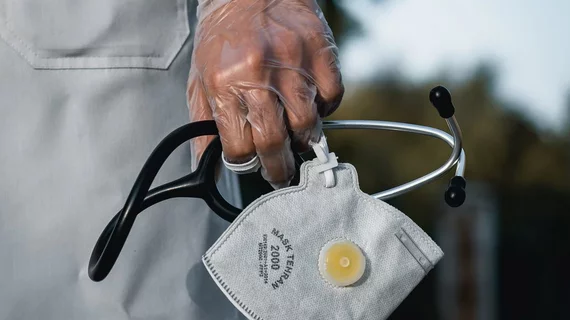Radiology practices must become agile to navigate future COVID-19 peaks and valleys
During the early days of the pandemic, radiology practices suffered significant drops in imaging volumes, with some shuttering for good. And while vaccines offer some solace, departments must continue to brace for future waves of COVID-19 along with long- and short-term fallout from the pandemic.
Part of that preparation includes incorporating innovation principles directly into care delivery strategies, enabling “organizational agility” amid uncertainty, Joshua M. Liao, MD, MSc, of the University of Washington School of Medicine in Seattle, explained in JACR.
“Healthcare leaders should embrace innovation as discipline: an approach that reflects a systematic process of using rapid experimentation to test and scale solutions,” Liao added Sunday in his opinion piece. “These principles and tactics are well-described outside of healthcare but still remain underused by many healthcare providers.”
Fail fast, fail forward
Innovation can involve products and technology, but must also go beyond this narrow scope, Liao wrote. Failing fast involves taking steps to discover what works and moving on from losses as quickly as possible. Similarly, departments that fail forward gain insights from failures on their overall path toward success.
“The two principles share the same intuition: the faster a leader can learn what does not work, the faster she can find what does,” Liao wrote on Dec. 13.
While such ideas seem obvious, much of healthcare works at a snail’s pace when deciding whether to adopt new processes or models. Internal teleradiology, for example, skyrocketed to success early in the pandemic, but may not become a mainstay, Liao argued, due to workflow disruptions, infrastructure investment needs, and distance concerns, among other perceived challenges.
Vapor tests and fake back-ends
So how can rad practices implement these strategies?
Liao suggested using quick, low-cost methods that assess demand, such as vapor tests or fake back-ends. Typically used in retail environments to gauge demand before investing time and resources into a product, the approach is already being piloted in healthcare settings.
The Penn Medicine Center for Health Care Innovation, for example, has used fake back-ends to determine demand for same-day orthopedic appointment scheduling. It posted a practice manager’s cell phone number online as a fake call center to successfully assess patient demand.
And radiology leaders can do the same, Liao explained. For imaging teleconsultations, departments could vapor test demand by allowing referring providers and patients to sign up for a previously announced service that doesn’t yet exist and then invest in those that do show high demand.
Leaders can also beta test artificial intelligence platforms for triaging COVID-19 cases by using fake back-ends staffed by clinicians.
There is no single solution to weathering the COVID-19 pandemic. And implementing the tactics mentioned above do come with some level of deception, so strong professional and ethical oversight is necessary, Liao cautioned.
“Nonetheless, innovation can afford leaders with more agility than traditional methods, helping them move more rapidly toward care delivery approaches based on what patients already signal will work rather than what leaders themselves hypothesize will work,” Liao concluded.
Read the entire piece published in the Journal of the American College of Radiology here.

